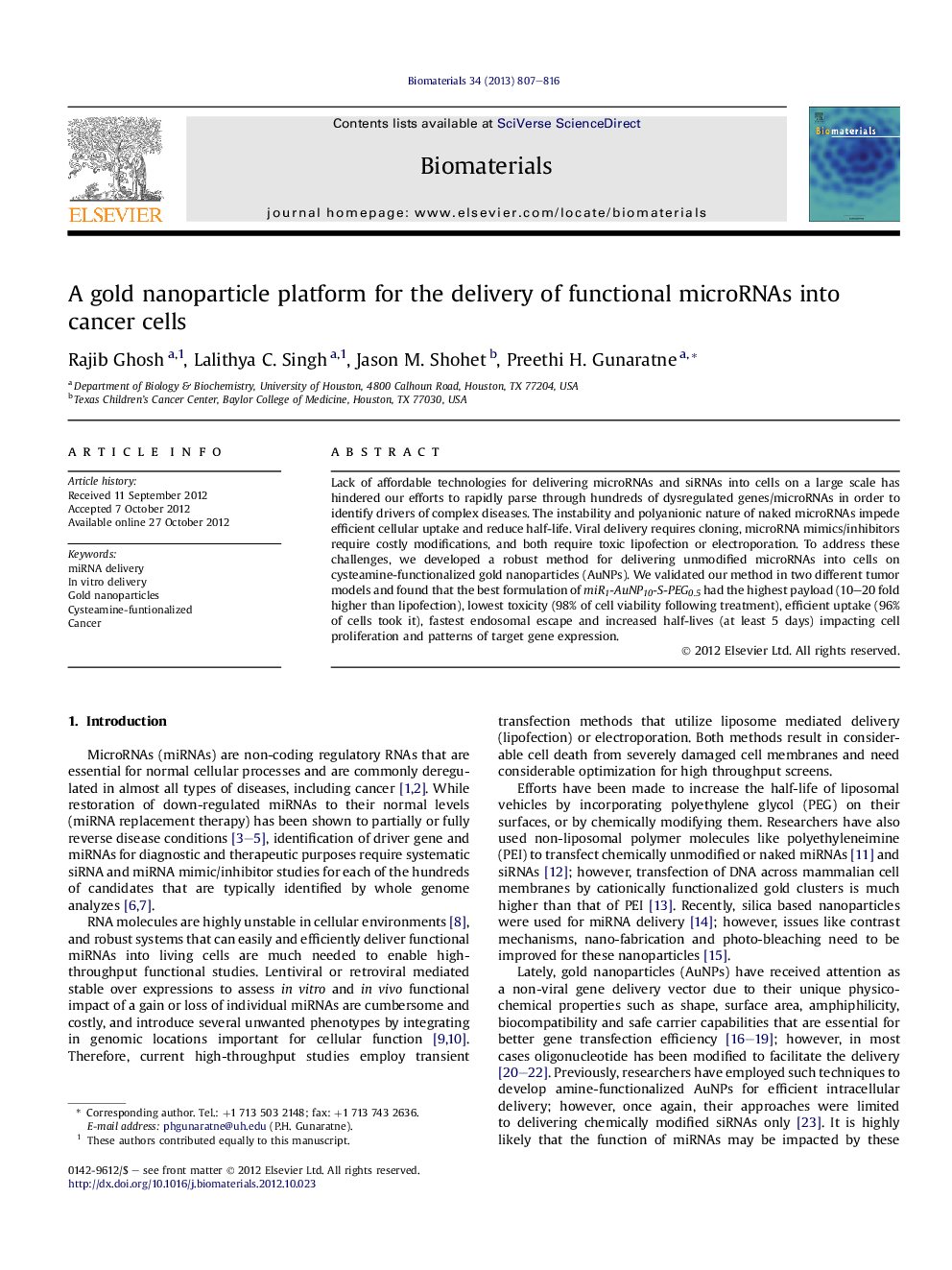| Article ID | Journal | Published Year | Pages | File Type |
|---|---|---|---|---|
| 6858 | Biomaterials | 2013 | 10 Pages |
Lack of affordable technologies for delivering microRNAs and siRNAs into cells on a large scale has hindered our efforts to rapidly parse through hundreds of dysregulated genes/microRNAs in order to identify drivers of complex diseases. The instability and polyanionic nature of naked microRNAs impede efficient cellular uptake and reduce half-life. Viral delivery requires cloning, microRNA mimics/inhibitors require costly modifications, and both require toxic lipofection or electroporation. To address these challenges, we developed a robust method for delivering unmodified microRNAs into cells on cysteamine-functionalized gold nanoparticles (AuNPs). We validated our method in two different tumor models and found that the best formulation of miR1-AuNP10-S-PEG0.5 had the highest payload (10–20 fold higher than lipofection), lowest toxicity (98% of cell viability following treatment), efficient uptake (96% of cells took it), fastest endosomal escape and increased half-lives (at least 5 days) impacting cell proliferation and patterns of target gene expression.
